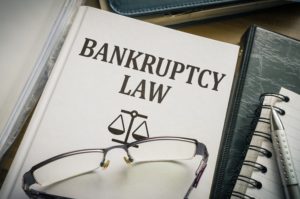 There is conflicting case law as to whether it violates the automatic stay for a creditor to sue the debtor in bankruptcy court on a prepetition claim, for example in an adversary proceeding. Although the language of Section 362(a)(1) of the Bankruptcy Code clearly stays such a filing, the majority rule is that creditors may bring such proceedings in bankruptcy court without violating the stay. For example, in In re North Coast Village, Ltd., 135 B.R. 641, 643 (9th Cir.BAP 1992), the court stated:
There is conflicting case law as to whether it violates the automatic stay for a creditor to sue the debtor in bankruptcy court on a prepetition claim, for example in an adversary proceeding. Although the language of Section 362(a)(1) of the Bankruptcy Code clearly stays such a filing, the majority rule is that creditors may bring such proceedings in bankruptcy court without violating the stay. For example, in In re North Coast Village, Ltd., 135 B.R. 641, 643 (9th Cir.BAP 1992), the court stated:
It is beyond serious dispute that the application of the stay to certain proceedings in the bankruptcy court would lead to absurd results. For example, if the automatic stay were construed to apply to all proceedings in bankruptcy, a creditor would need relief from the stay to file a proof of claim or even a motion for relief from the stay. As a further example, application of the stay to bar the commencement of proceedings to determine the dischargeability of a debt in the absence of relief from the stay would be unworkable in light of the short time limits within which such proceeding must be commenced.
See also, In re Briarwood Hills Associates, L.P., 237 B.R. 479 (Bankr.W.D.Mo.1999) (the automatic stay does not apply to proceeding in bankruptcy court having jurisdiction over the debtor); In re Uni-Marts, LLC, 399 B.R. 400 (Bankr.D.Del.2009) (Automatic stay of proceedings against debtor did not apply to proceeding that was commenced as adversary proceeding in bankruptcy court.); In re Bird, 229 B.R. 90, 95 (S.D.N.Y.1999) In re Transcolor Corp., 296 B.R. 343. 358 (Bankr.D.Md.2003); In re Miller, 397 F.3d 726, 730 (9th Cir.2005); and In re Cashco, 599 B.R. 138, 146 (Bankr.D.N.M.2019).
In re Roman Catholic Church of Archdiocese of Santa Fe, 627 B.R. 916 (Bankr.D.N.M.2021), followed the countervailing and so-called minority view for three reasons. First, the court stated that the language of Section 362(a)(1) is clear and the commencement of a judicial action against the debtor that could have been commenced prepetition is stayed, regardless of the forum. Second, enforcing Section 362(a)(1) as written will not lead to “absurd results” as suggested by those espousing the “majority rule.” The court explained that while the majority reasons that a literal application of the subsection would require stay relief before filing proofs of claim, nondischargeability actions, or stay relief motions, that is not, in fact, correct as those actions arise under the Bankruptcy Code and could not have been brought prepetition. Id. at 922. Finally, the court explained that suing the debtor in bankruptcy court is not equivalent to filing a proof of claim. Claims objections are contested matters, not adversary proceedings. In addition, the debtor has control over the claims administration process, in particular whether and when to object to claims. Id. Other courts following the “minority view” include In re Penney, 76 B.R. 160, 161 (Bankr.N.D.Cal.1987); In re Hodges, 83 B.R. 25, 26 (Bankr.N.D.Cal.1988) (creditor cannot initiate adversary proceeding under Rule 7001 without leave of court); Healy/Mellon-Stuart Co. v. Coastal Group, Inc. (In re Coastal Group, Inc.), 100 B.R. 177, 178 (Bankr.D.Del.1989); In re Ionosphere Clubs, Inc., 922 F.2d 984, 993 (2nd Cir.1990) (automatic stay applies to dispute between debtor and union over a collective bargaining agreement, even if the matter is brought before the bankruptcy court); and Bridges v. Continental AFA Dispensing Co. (In re Continental AFA Dispensing Co.), 403 B.R. 653, 659 (Bankr.E.D.Mo.2009).
Matthew T. Gensburg
[email protected]

